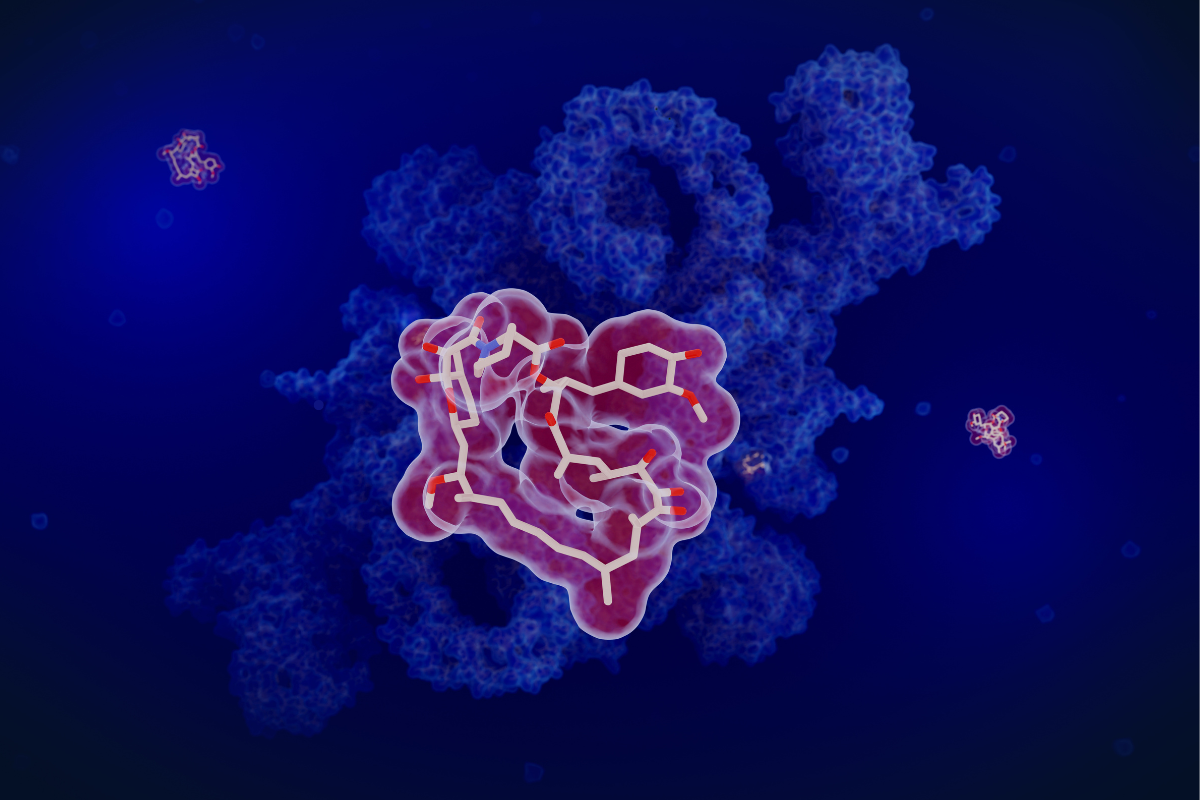Rapamycin is a fascinating compound that has aroused considerable interest in the fields of biology and medicine. First discovered on Easter Island, this molecule has revolutionised our understanding of cell regulation mechanisms. In particular through its interaction with mTOR complexes.
Origin and discovery of Rapamycin
Rapamycin was discovered in the 1960s on Easter Island (Rapa Nui) by a team of researchers exploring the unique properties of soil samples. The compound was isolated from the Streptomyces hygroscopicus bacterium.
Early studies revealed that rapamycin had immunosuppressive and antifungal properties, leading to its development as a drug. It was approved by the FDA in 1999 to prevent organ transplant rejection.
“What is mTOR?”
mTOR, or mammalian target of rapamycin, is a protein kinase that plays a central role in regulating cell growth, proliferation, metabolism, and survival. It is part of a complex signaling pathway called the mTOR pathway, which integrates various signals from the cellular environment, such as nutrients, growth factors, and energy levels, to coordinate the appropriate cellular response.
The mTOR pathway is divided into two main complexes: mTORC1 (complex 1) and mTORC2 (complex 2). mTORC1 is primarily responsible for regulating protein synthesis, autophagy and lipid metabolism. It is activated by signals such as amino acid availability and insulin. mTORC2, on the other hand, is involved in actin cytoskeleton regulation and insulin signalling, among other functions.
mTOR activity is finely regulated, as abnormalities in this pathway can lead to serious diseases such as cancer, type 2 diabetes and certain neurodegenerative diseases.
What are Rapamycin’s mechanisms of action?
Rapamycin acts primarily by inhibiting mTORC1 (Mechanistic Target of Rapamycin Complex 1). mTOR is a kinase, an enzyme that adds phosphate groups to other proteins, playing a crucial role in regulating cell growth, proliferation and survival in response to nutrients,energy and growth signals. Inhibition of mTORC1 by rapamycin disrupts these processes, which may lead to beneficial effects in specific medical contexts, such as the prevention of organ transplant rejection and the potential to increase longevity.
Rapamycin has a unique mechanism of action. The rapamycin molecule enters the cell and binds to an intracellular protein called FKBP12 (FK506 binding protein 12). This rapamycin-FKBP12 complex then binds to mTORC1, blocking its activity. This interaction prevents mTORC1 from phosphorylating its downstream targets, thereby inhibiting the anabolic and cell growth processes that mTORC1 normally regulates.
This distinctive mechanism differentiates rapamycin from other mTOR inhibitors that act more directly on the mTOR active site. By binding to FKBP12, rapamycin uses an allosteric approach, modifying the conformation of mTORC1 and making the active site less accessible to natural mTOR substrates. Moreover, this selective inhibition of mTORC1, rather than mTORC2 (another mTOR complex involved in the regulation of actin and other cellular functions), is what gives rapamycin its unique pharmacological properties. However, it is important to note that prolonged inhibition of mTORC1 may also influence mTORC2 indirectly, an aspect that is currently the subject of much research to understand its clinical implications.
Effects of Rapamycin on longevity and health
Studies on animal models, particularly mice, have shown that rapamycin can extend lifespan and improve various health indicators. TheNational Institute on Aging (NIA) intervention programme has demonstrated that rapamycin increases the lifespan of mice even when administered at an advanced age.
The implications for human health are promising, although long-term clinical studies are needed to confirm these effects. Rapamycin is currently being explored for its potential benefits in the treatment of age-related diseases and neurodegenerative disorders such as Alzheimer’s disease.
Nutrient regulation and mTOR
Amino acids, in particular leucine, play a crucial role in the activation of mTOR . mTOR is in fact a key enzyme for cell growth and regeneration. Leucine binds to a specific protein called Sestrin, which acts as a leucine sensor, triggering the activation of mTORC1.
Rapamycin has complex effects on protein metabolism and muscle synthesis. Although it inhibits mTORC1, which could theoretically reduce muscle building, it may actually help prevent sarcopenia (loss of muscle mass) in the elderly.
This is possible thanks to its properties of reducing systemic inflammation and stimulating autophagy, a process by which cells eliminate their damaged components, thereby promoting a healthier cellular environment.
Clinical and therapeutic applications
Rapamycin is widely used by doctors to prevent organ transplant rejection, due to its immunosuppressive properties. It is often administered in combination with other drugs to maximise its efficacy and minimise the risk of rejection.
Recent research suggests that rapamycin may also be beneficial in the treatment of neurodegenerative diseases, such as Alzheimer’s disease. It could help to reduce amyloid plaques, which are deposits of abnormal proteins in the brain, and reduce cerebral inflammation, thereby helping to protect cognitive function and slow the progression of these diseases.
Side effects and controversies
Like any drug, rapamycin has side effects, including the risk of diabetes,hyperlipidaemia (high levels of lipids in the blood) and myelosuppression (reduced production of blood cells by the bone marrow). It is crucial to monitor tolerance and manage doses appropriately to minimise these adverse effects.
The benefit/risk ratio of rapamycin should be carefully assessed, particularly for long-term use in the elderly. Ongoing clinical trials aim to determine optimal dosing protocols to maximise therapeutic benefits while minimising health risks.
Sources
- Targeting the biology of aging with mTOR inhibitors
- Mammalian Target of Rapamycin





